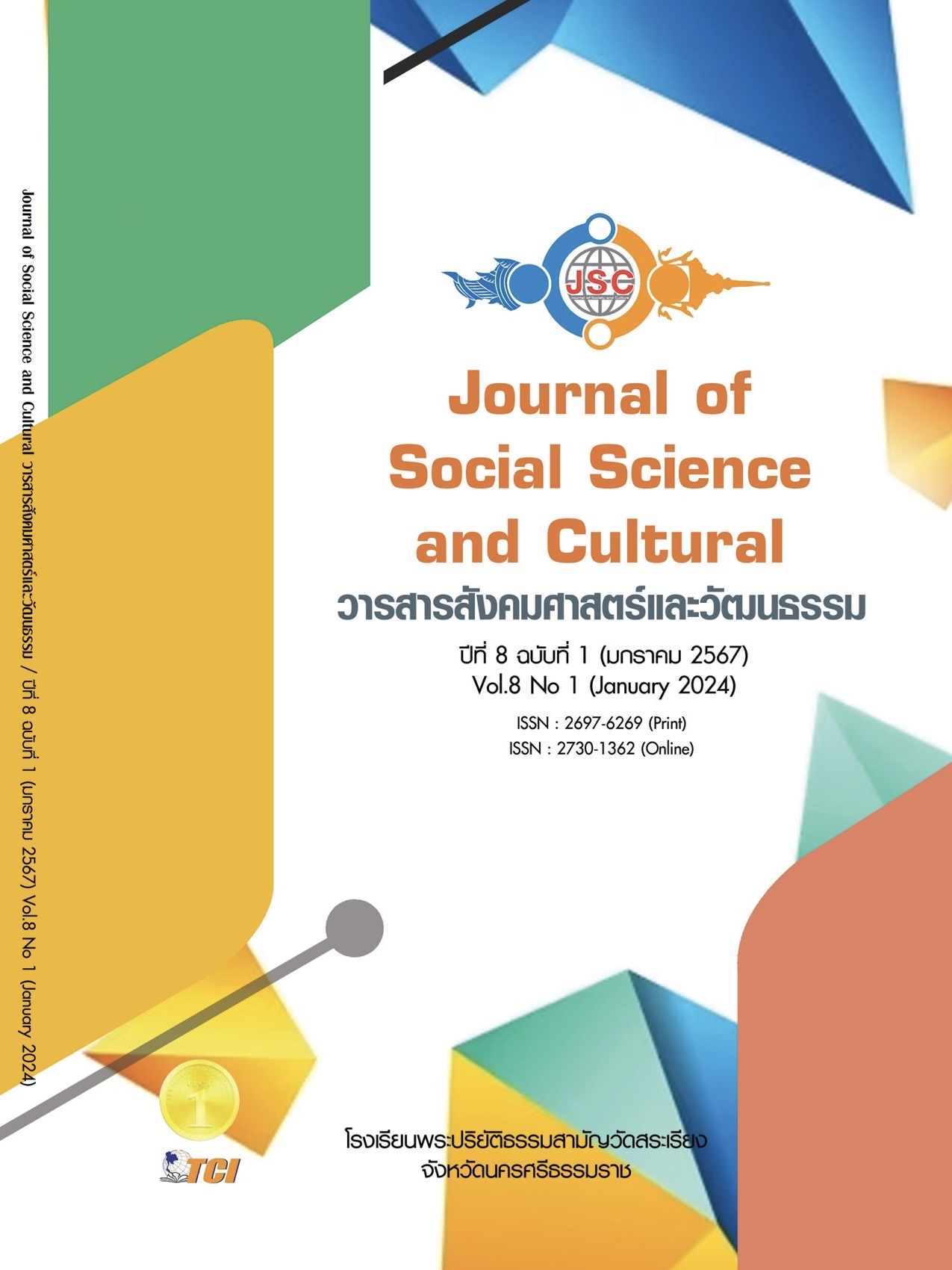THE EFFECTS OF INTERMEDIATE CARE REHABILITATION PROGRAMS ON THE ABILITY OF HIP FRACTURE PATIENTS TO PERFORM DAILY ACTIVITIES WITH REMOTE FOLLOW-UP
Main Article Content
Abstract
The objective of this study was to compare the effects of intermediate rehabilitation programs on the ability of patients with hip fractures to perform daily activities. The study used rehabilitation programs combined with remote follow-up. The sample consisted of 60 elderly patients with hip fractures who were admitted to Nang Rong Hospital. The sample was divided into two groups using simple random sampling: the experimental group, which participated in the rehabilitation program combined with remote follow-up, and the control group, which participated in the rehabilitation program only. The research tools used were a daily activity assessment tool with a reliability of 0.9 and rehabilitation programs. The results showed that both groups of samples had a higher incidence of intertrochanteric femur fractures than neck of femur fractures, accounting for 63.3%. When comparing the daily activity assessments of the experimental and control groups before and after the experiment, it was found that the daily activity scores of both groups increased significantly at p < .05. When comparing the daily activity assessments between the experimental and control groups, it was found that the experimental group had better daily activity ability than the control group, with a statistically significant difference at p < .05. In conclusion, patients who participated in rehabilitation programs combined with remote follow-up regularly had better daily activity ability than patients who participated in rehabilitation programs only.
Article Details
References
ธนพร รัตนาธรรมวัฒน์ และทัศนา ชูวรรธนะปกรณ์. (2561). ผลของโปรแกรมการจัดการตนเองของบุคคล และครอบครัวต่อความสามารถในการทำหน้าที่่ของร่างกายของผู้สูงอายุกระดูกสะโพกหัก. วารสารพยาบาลตำรวจ, 10(2), 289-295.
ธนาวรรณ แสนปัญญา และคณะ. (2564). การพัฒนาระบบฐานข้อมูลการดูแลผู้ป่วยระยะกลางกลุ่มผู้สูงอายุกระดูกสะโพกหักที่ได้รับการผ่าตัด. วารสารโรงพยาบาลแพร่, 29(2), 15-33.
พรธิดา ชื่นบาน และคณะ. (2564). การพัฒนารูปแบบการพยาบาลผู้สูงอายุกระดูกสะโพกหัก ที่ได้รับการผ่าตัดผ่านช่องทางด่วน โรงพยาบาลแพร่. วารสารพยาบาลกระทรวงสาธารณสุข, 31(3), 70-84.
ภัททิรา เวียงคำ และคณะ. (2565). ประสิทธิผลของโปรแกรม Phrae FLS เพื่อลดอุบัติการณ์กระดูกหักซ้ำในผู้ป่วยกระดูกสะโพกหักโรงพยาบาลแพร่. วารสารโรงพยาบาลแพร่, 30(1), 112-126.
มนัสวี ให้ศิริกุล. (2566). การพัฒนาระบบการฟื้นฟูสมรรถภาพทางกายในผู้ป่วยระยะกลางผ่านระบบไลน์ออฟฟิตเชียล. วารสารการแพทย์โรงพยาบาลศรีสะเกษ สุรินทร์ บุรีรัมย์, 38(1), 219-227.
มูลนิธิสถาบันวิจัยและพัฒนาผู้สูงอายุไทย. (2563). รายงานสถานการณ์ผู้สูงอายุไทย พ.ศ. 2563. เรียกใช้เมื่อ 12 พฤษภาคม 2565 จาก https://thaitgri.org/?p=39772&fbclid=IwAR0pCopDX2ZdTb3LCTbsdh V1JSJ-Llcs5KBhK-Su6Z6KU-
วุฒิชัย แซ่เฉิน. (2565). ผลของโปรแกรมฟื้นฟูสมรรถภาพแบบทางไกลที่มีการติดตามต่อเนื่องรายสัปดาห์ในผู้ป่วยที่หายจาก ภาวะปอดอักเสบจากการติดเชื้อไวรัสโคโรนา สายพันธุ์ 2019. ใน วิทยานิพนธ์วิทยาศาสตรมหาบัณฑิต สาขาวิชาอายุรศาสตร์. จุฬาลงกรณ์มหาวิทยาลัย.
ศุภพร ศรีพิมาน และคณะ. (2563). ผลของการใช้โปรแกรมส่งเสริมพฤติกรรมการดูแลตนเองต่อความรู้ การรับรู้ความสามารถ และพฤติกรรมการดูแลตนเองของผู้ป่วยผ่าตัดกระดูกสะโพก หอผู้ป่วยศัลยกรรมออร์โธปิดิกส์ โรงพยาบาลสงขลา. วารสารวิทยาลัยพยาบาลพระจอมเกล้า จังหวัดเพชรบุรี, 3(2),149-165.
สถาบันสิรินธรเพื่อการฟื้นฟูสมรรถภาพทางการแพทย์แห่งชาติ กรมการแพทย์ กระทรวงสาธารณสุข. (2565). คู่มือการฟื้นฟูสมรรถภาพผู้ป่วยระยะกลาง สำหรับผู้ป่วยกระดูกสะโพกหัก สำหรับบุคลากรทางการแพทย์ตามแผนพัฒนาระบบบริการสุขภาพ (Service Plan). กรุงเทพมหานคร: สถาบันสิรินธรเพื่อการฟื้นฟูสมรรถภาพทางการแพทย์แห่งชาติ กรมการแพทย์ กระทรวงสาธารณสุข.
Cheung, C. L., et al. (2018). An updated hip fracture projection in Asia: The Asian Federation of Osteoporosis Societies study. Osteoporos Sarcopenia, 4(1), 16-21.
Faul, F. L., et al. (2007). G*Power 3: A Flexible Statistical Power Analysis Program for the Social, Behavioral, and Biomedical Sciences. Behavior Research Methods, 39(2), 175-191.
Gilboa, Y., et al. (2019). Effectiveness of a tele-rehabilitation intervention to improve performance and reduce morbidity for people post hip fracture-study protocol for a randomized controlled trial. Journal of BMC Geriatrics, 19(135), 1-9.
Hobart, I., et al. (2001). The five item Barthel index. Journal of Neurology, Neurosurgery and Psychiatry, 71(2), 225-230.
Thambiah, S. C. & Yeap, S. S. (2020). Osteoporosis in South- East Asian Countries. The Cinical Biochemist Reviews, 41(1), 29-40.
Wu, W. Y., et al. (2022). Clinical Effectiveness of Home-Based Telerehabilitation Program for Geriatric Hip Fracture Following Total Hip Replacement. Orthopaedic Surgery, 15(2), 423-431.

